Check out these 10 different sunflower varieties to chose the best sunflowers for your garden goals, whether you are growing sunflowers for food, pollinators, or pleasure. Though the beauty of sunflowers brings pleasure, no matter the other uses of the sunflowers themselves.
Last summer Bogle Seeds Family Farm just outside of Toronto planted a field of oilseed sunflowers for their bird seed products. They opened their family farm to the public in the middle of July to share the millions of blooming sunflowers. It was picture perfect. That was the problem. The Instagrammers came to get the perfect sunflower shot. Many skipped the admission booth and entered the fields from the roadway, damaging the sunflowers as they bushwhacked through the fields to the perfect bloom.
The farm was not prepared for the popularity of the sunflower photo-ops. There were thousands of cars that came to see the beautiful fields of sunflowers and get the best shots. The neighbours complained. Police at one point estimated 7,000 cars in one afternoon, before they shut the operation down, after just 2 weeks.
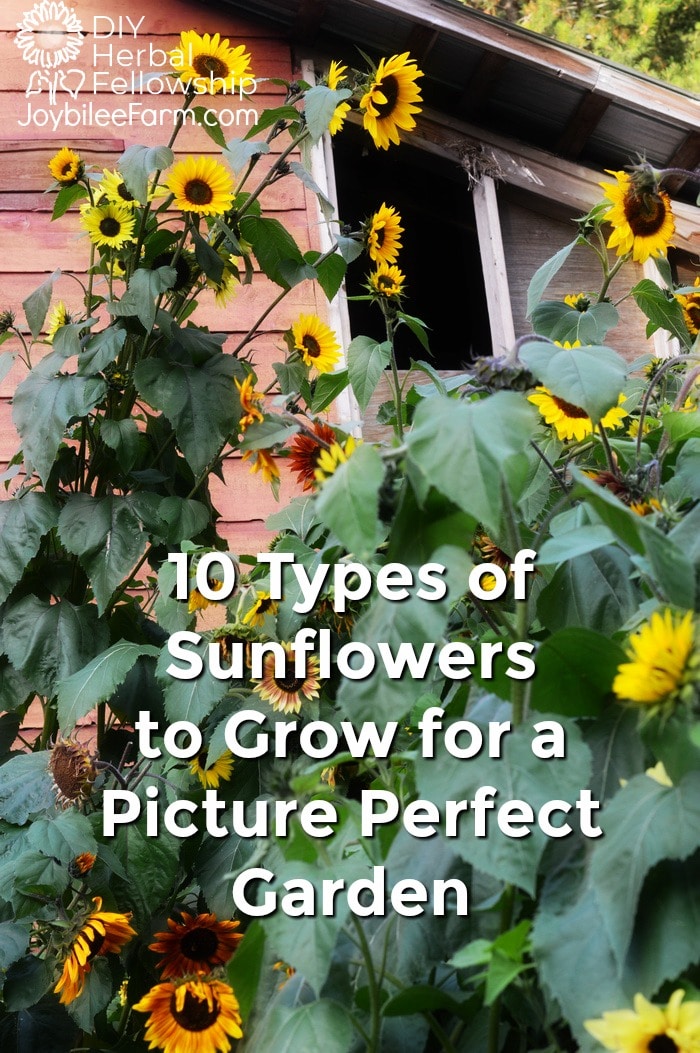
While you probably won’t be planting millions of sunflowers this spring, you might want to add a few sunflower varieties to your own garden this year. You may even get the perfect sunflower backdrop for a family picnic or family photos. But your beautiful sunflowers are for so much more than the perfect photo op.
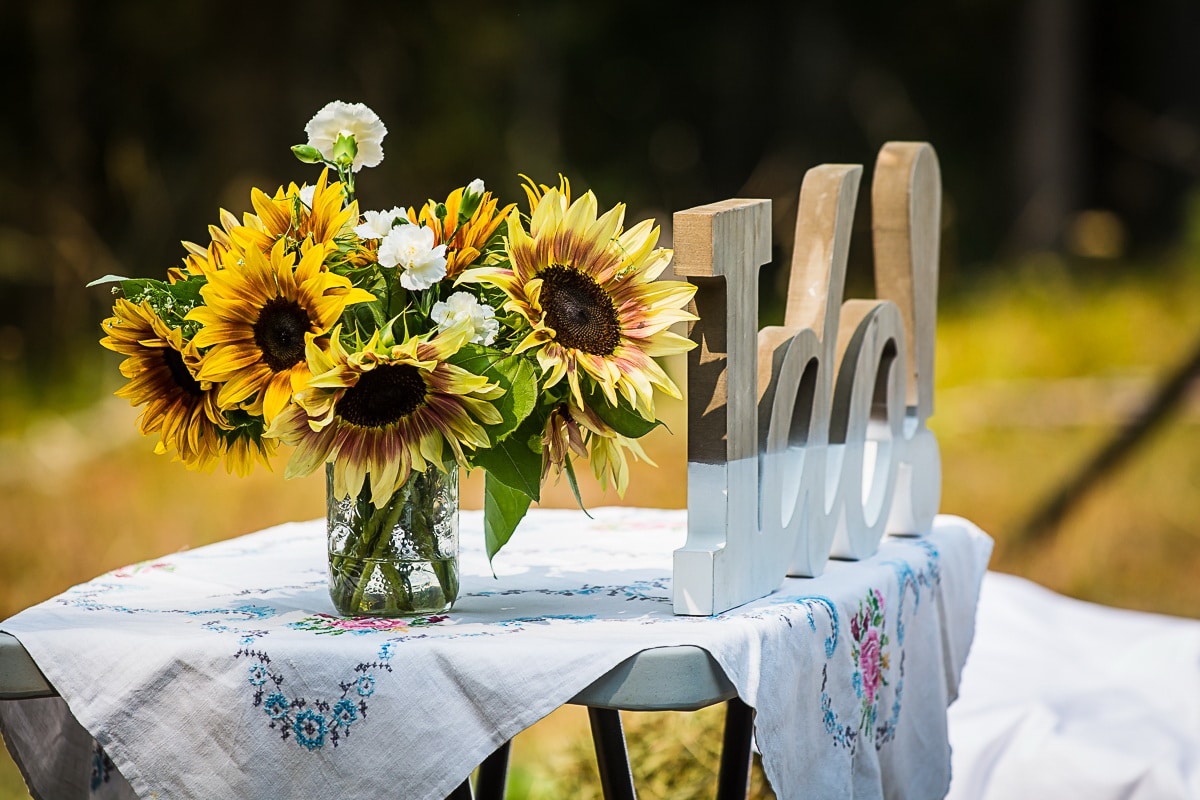
Photo used with permission Sheryl McIver of Mobetta Photography, Grand Forks, BC
Sunflowers are versatile annuals that you can grow whether you live in a short season area or you have several months of warmth. You can even grow them in winter as microgreens. The key to success is to pick the right sunflower varieties for your purposes. There are several different types of sunflowers and which ones you grow depends on what your purpose is for growing them.
10 Different types of sunflowers to grow
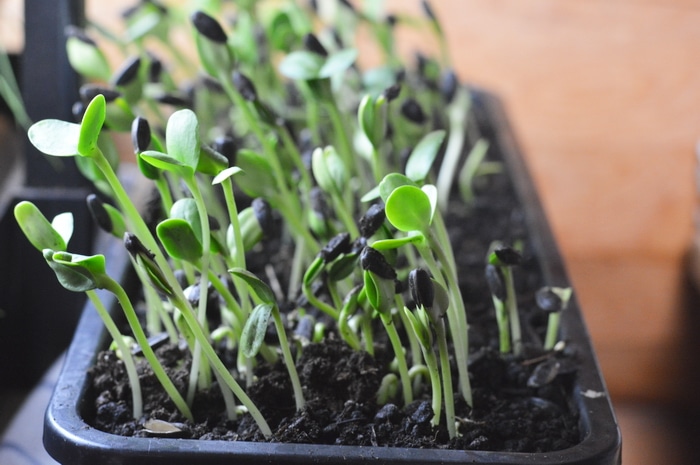
Sunflower Microgreens
To grow microgreens pick inexpensive black oil sunflower seeds, preferably organic. Microgreens are grown out for a mere 12 to 15 days before harvesting the greens for succulent, tender greens. Slip them into a sandwich or sprinkle them on top of a salad bowl for extra crunch and flavour.
Sunflower seeds have a 3 year shelf life so plan to replenish your sunflower microgreens seed every 3 years by growing out the oilseed sunflowers in the third year and saving the seed. You’ll have a perpetual supply of sunflower seeds for microgreens when you manage it this way.
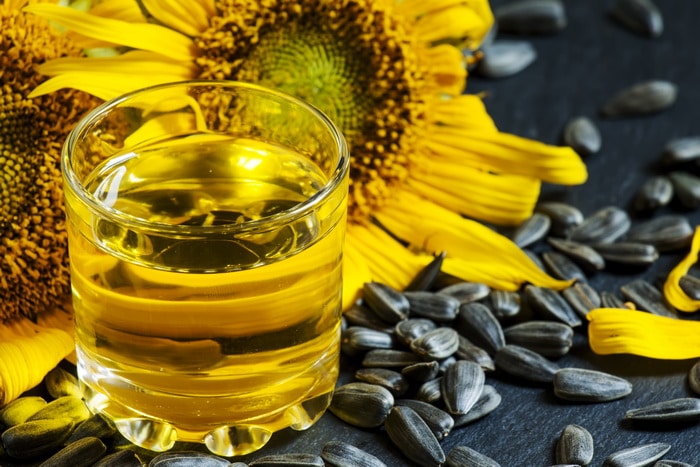
Oilseed Sunflower
While sunflowers originated in North America, Russia has taken the lead in breeding oilseed sunflowers. Russian sunflower varieties are fast growing and cold hardy with the heirloom “Peredovik” being one of the best varieties for oilseed production.
If you plan on growing sunflowers to press your own sunflower oil, you’ll need to plant a lot of sunflowers. Plan on planting 3 to 4 pounds of sunflower seed per acre. Oil yield is about 35 to 80 gallons per acre. Birdseed yield is around 1300 pounds per acre without irrigation and more with irrigation. On a smaller scale that’s about 12 sunflowers or 3 pounds of seed, per quart (litre) of cold, pressed sunflower oil. You’ll need an electric oil press like this one, or a manual press like this one, to get the oil from the seed.
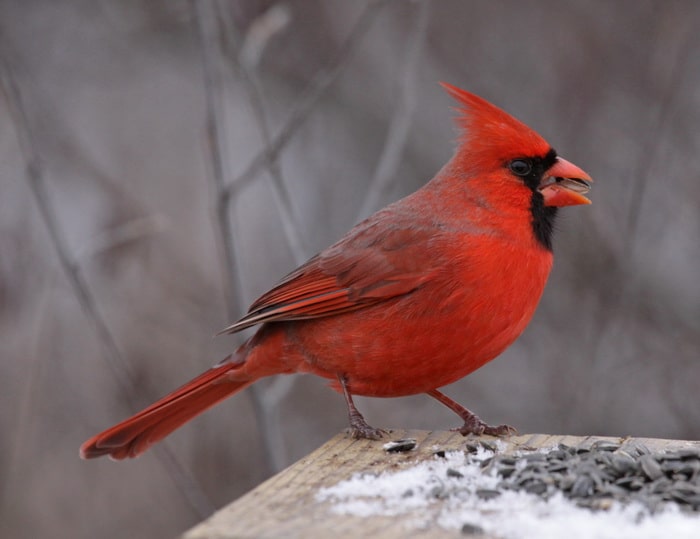
Sunflower types for birdseed
If you want to grow sunflowers for the birds choose an oilseed variety. The oilseed varieties are versatile and the seed is inexpensive. Even though sunflowers are a North American native plant, Russia is the world’s foremost breeder of oilseed sunflowers. They have developed some highly productive varieties for short-season areas, yielding about a 1/4 pound of sunflower seed per sunflower head. “Peredovik” is the dominant birdseed and oilseed sunflower planted on the Canadian prairies.
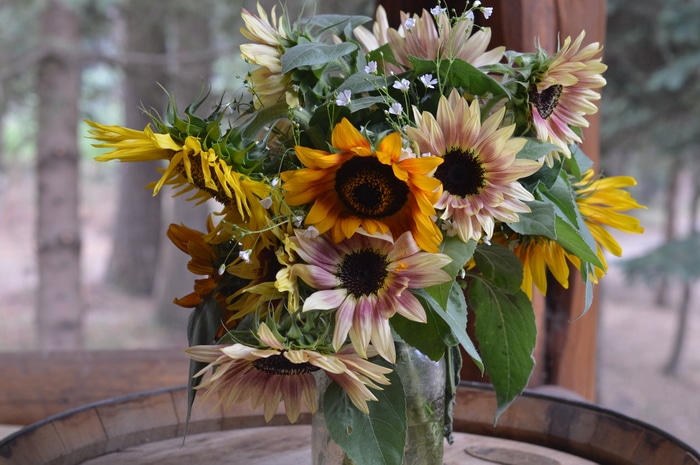
Cut flower garden and sunflower arrangements
For cut flowers, you’ll do better with hybrid pollen-less sunflowers. Sunflower pollen will make a mess of tablecloths and tabletops, but these hybrid varieties don’t shed pollen so they are perfect for cut flowers. Single stemmed sunflowers give you just one chance to harvest a cut flower, whereas branching sunflowers will give you many blooms from the same stalk. How big the blooms are will depend on the spacing of the sunflowers. If you want a lot of large blooms, plant these 6 to 8 inches apart. If you want small blooms for indoor flower arrangements or bouquets use a 4 to 5-inch spacing.
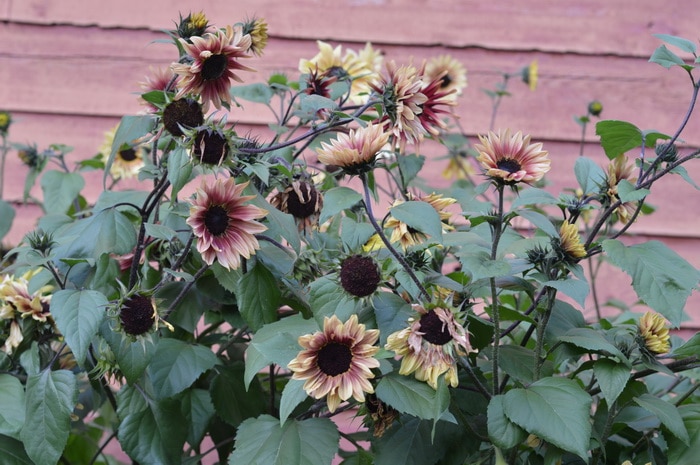
Fast growing sunflower varieties for privacy and beauty
If you want to plant sunflowers as a fast growing privacy screen choose open-pollinated varieties that grow 6 to 8 feet in height. Sunflowers are fast growing annuals with some varieties growing more than a foot a week. These can establish a privacy screen in a month, that gets more beautiful as the season wears on. Branching sunflowers fill in both vertically and horizontally. Plant the sunflower screen in full sun for optimal growth and flowering.
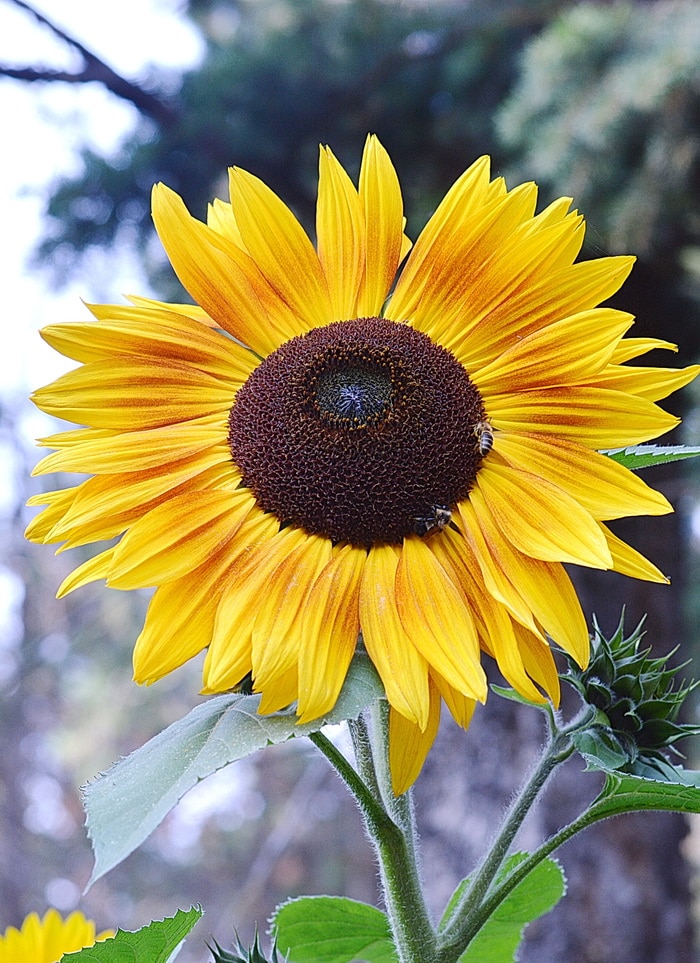
Sunflowers for the pollinators, butterflies, and bees
Open pollinated sunflowers aren’t just pretty flowers. These, like Lemon Queen Sunflowers, are rich in both pollen and nectar to feed native bees, hummingbirds, and honeybees. Honeybees and wild bees use the pollen from sunflowers medicinally to get rid of parasites. The Lemon Queen Sunflowers are the official sunflower for the great sunflower project, so if you plant them you can also participate in this citizen scientist pollinator count project from the University of San Fransisco.
Planting sunflowers near vegetable crops that need pollination can draw pollinators to the area, improving vegetable yields. Sunflowers are a magnet for pollinators, especially open-pollinated sunflower varieties.
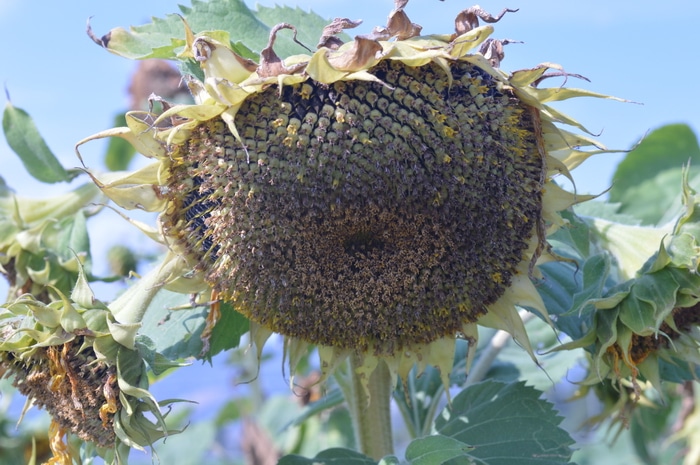
Edible seed sunflower types
If you want to grow sunflowers for culinary use, a grey seeded variety, like Russian Giant or Mammoth grey is best. Russian mammoth sunflowers mature a little later in the season. They should be direct seeded so that they have a strong root system to support their height.
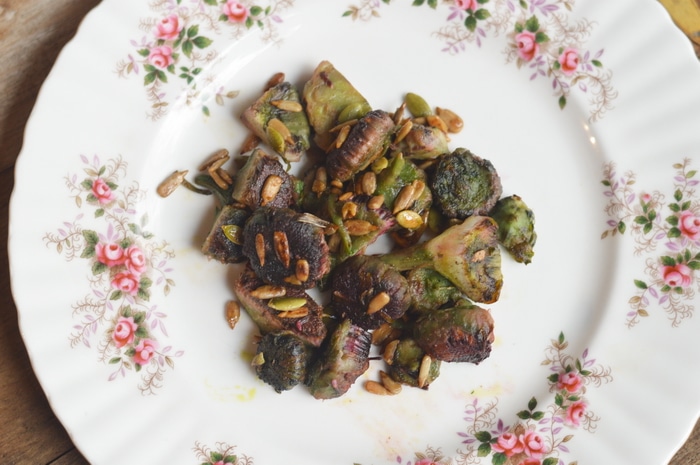
But it’s not just the seeds that are edible. The whole sunflower plant is edible. You can use the petals as a garnish, sprinkled over a green salad. The unopened flower buds can be steamed and used like artichokes. The green leaves of the young seedlings can also be used as food for humans and livestock.

Competition giant sunflower varieties
And if you want to grow stunning, giant sunflowers to be the talk of the neighbourhood, win ribbons at the fair, or maybe even make it into the Guinness Book of World Records, plant these seeds for competition size giant sunflowers. The world’s record for the tallest sunflower is currently held by Hans-Peter Schiffer (Germany) for a 2014 sunflower that measured over 30 feet tall (9.17m).
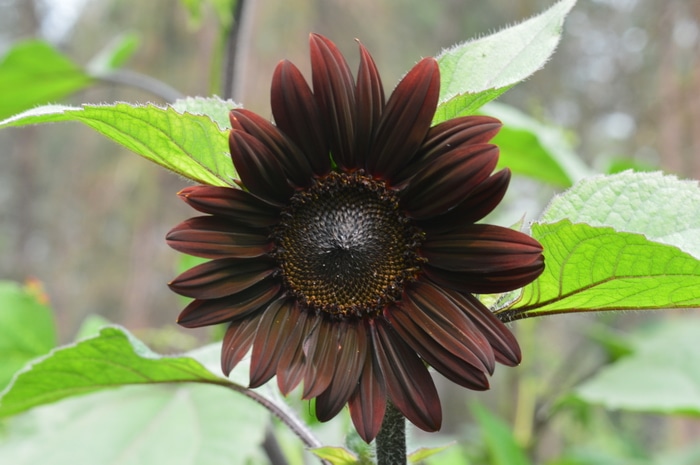
Red sunflowers
While traditional sunflowers are golden yellow there are a large variety of red sunflowers, too. From the deep maroon shades of Moulin Rouge to the pink blush of Strawberry Blonde and shades of red in between, red sunflowers make a stunning bouquet, garden attraction, and bee banquet.
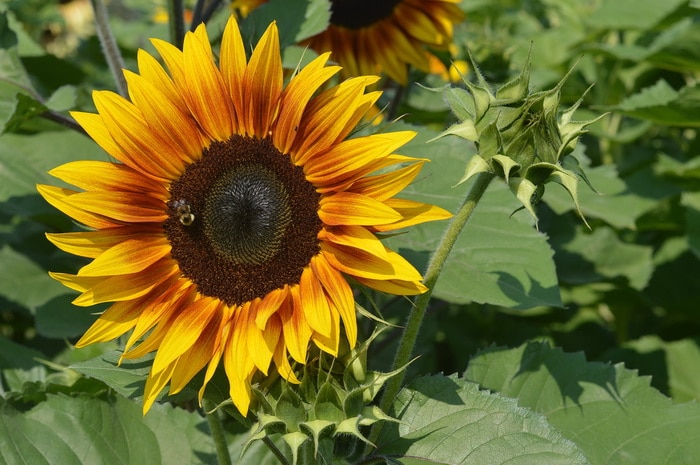
Many of the red varieties are hybrids without pollen like Moulin Rouge but there are a few open pollinated sunflowers that have both nectar and pollen for the bees, like Autumn Beauty.
Sunflowers for natural dyes
Hopi black dye sunflowers are black seeded sunflowers with the traditional yellow petals and dark brown center. The seeds and the spent flower heads are used to produce a blue-black dye for wool and cotton. The seeds are shiny black and the whole seed is used for dyeing wool a blue to purple colour with alum mordant in an acid dye bath. The colour shifts after a dip in alkaline. Use caution with heat as it can destroy the reds. The Hopi method of dyeing with these sunflowers to achieve blues and blacks is a mystery. But experiments have shown the colour to be an anthocyanin dye rather than indigo.
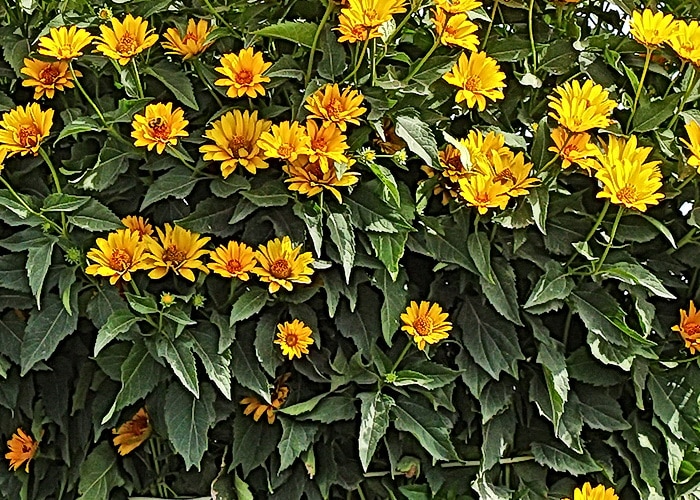
A few perennial sunflowers
We’ve been talking mostly about different types of annual sunflowers, but there are also a few different perennial sunflowers. Sunchokes or Jerusalem artichokes are perennial sunflowers that are grown for their starchy tuber. The tuber can be eaten raw, braised, baked, or fried much like sweet potatoes. The plants are hardy to zone 3 and full sun, just like other sunflowers. But in short-season areas, while you will get tubers, you may not get a flower. The plants are hardy to 28F until there is a hard frost.
Another perennial sunflower is Maximilian Sunflower, with its yellow 4-inch flowers and branching growth habit. Maximilian is hardy to zone 3 and the seeds need cold stratification before germination.
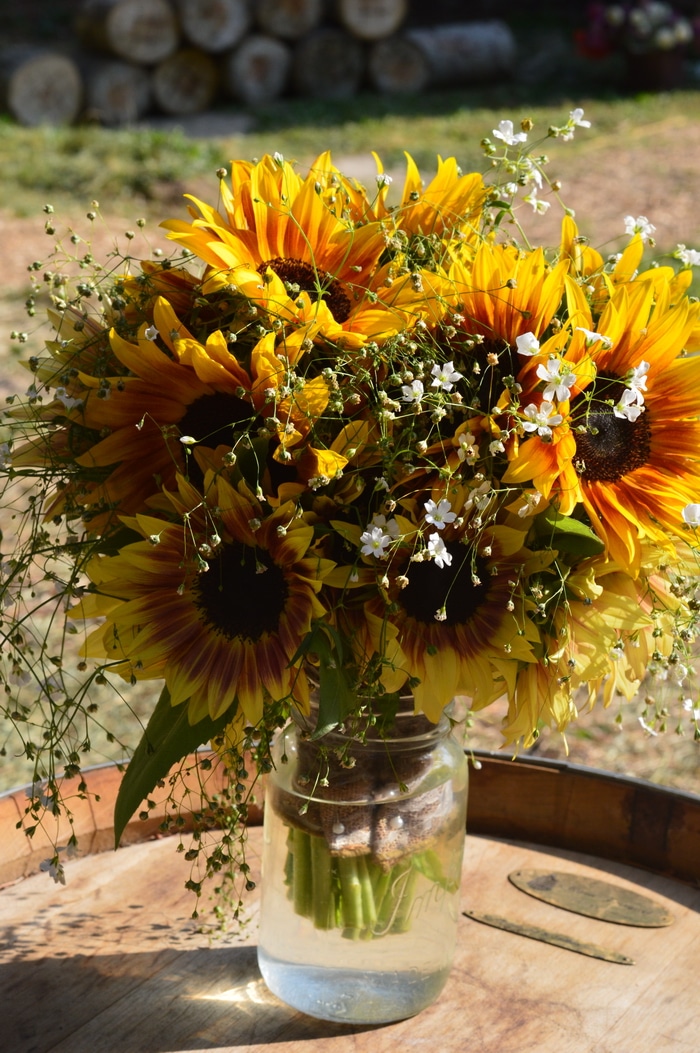
Which types of sunflower will you plant this year?
Why not make sunflowers a feature of your garden this summer by planting the right kinds of sunflowers this spring for your needs. Whether you choose a big yellow sunflower to grow for seed, an open-pollinated sunflower for the bees, a giant sunflower for competition, or a red sunflower just because you can, you’ll have many photo opportunities all summer long with sunflowers.
I’d love to see pictures of your sunflowers this year.



That sounds like a sunflower. Is it flowering?
Hi! I had gotten edible seeds of sunflower from somewhere. The seeds look exactly how they should – long, blackish with a white stripe on its sides. The problem is that the plant that has grown from the seeds looks nothing like a sunflower plant. It is a tall plant, with branches coming out of the main stalk and almost trident-shaped leaves. Are there any such varieties of sunflower? If not, I would rather get rid of the plant.